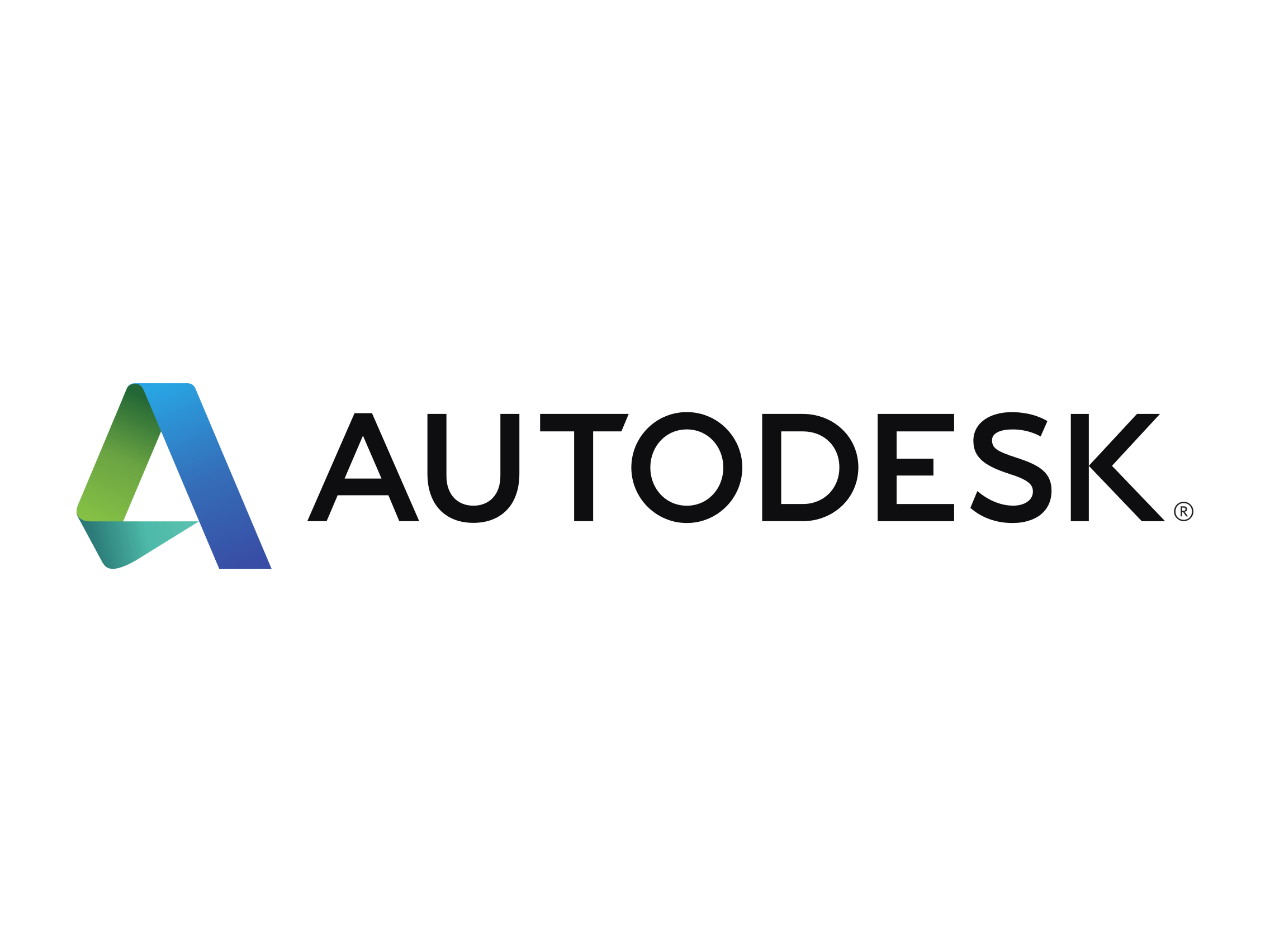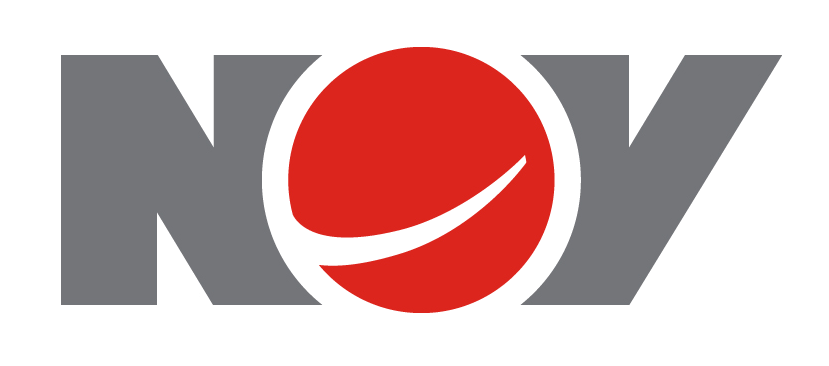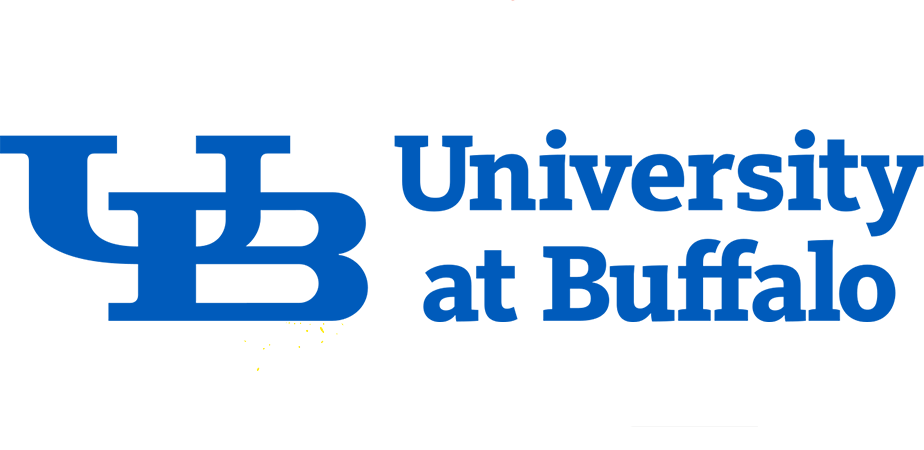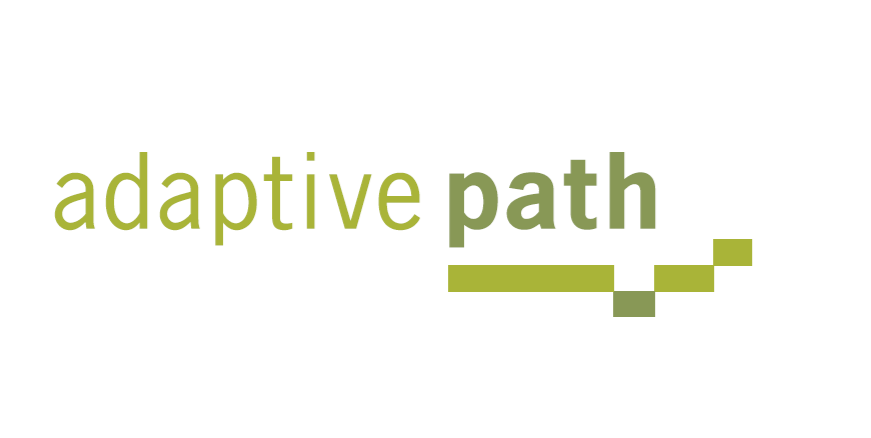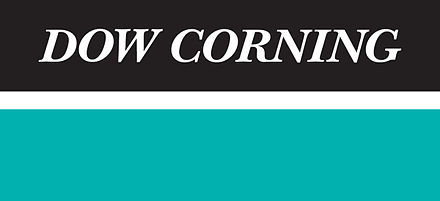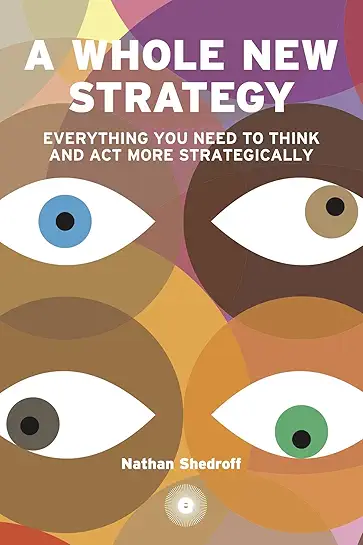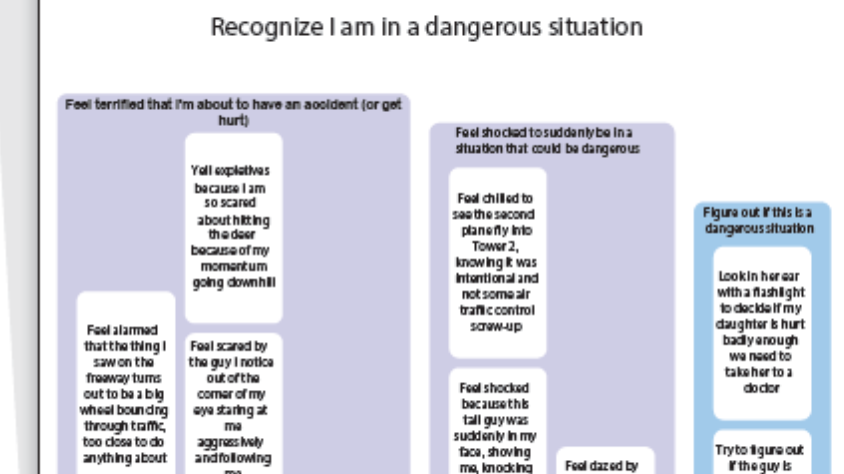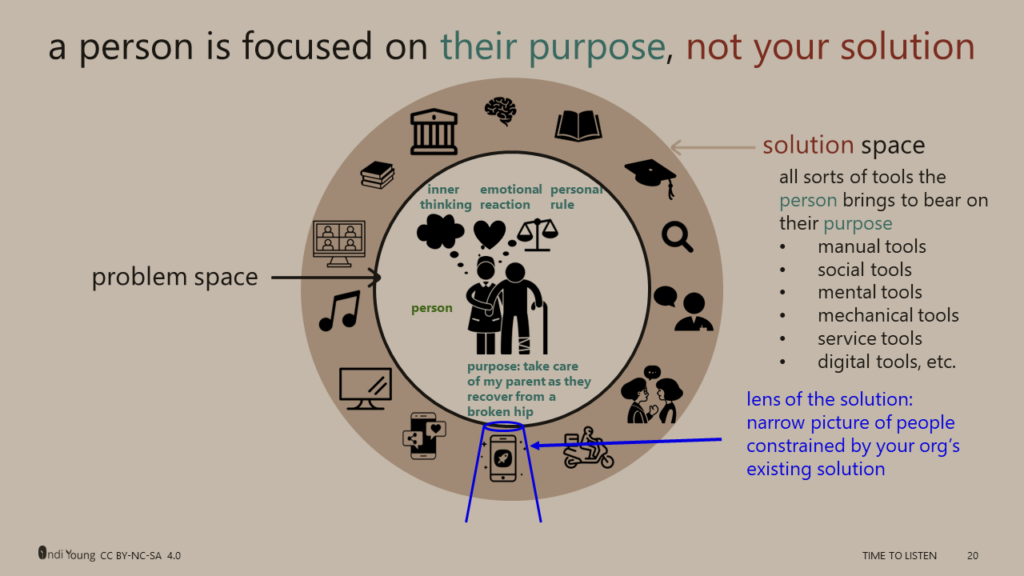“You need to know where you are going, in order to land the trick.”
Sue Bird, Basketball Champion, WNBA
If your org wants to “land” customers, employees, communities, or ethical changes, you need a strategy to follow.
➡️ Strategy is about people. Where are they going & thinking so that you can bring tailored solutions?
➡️ Strategy creates a broader variety of long-term value that benefits people (and the planet)
A lot of effort goes into your product operations. Don’t try to make a leap or pivot without knowing people’s cognition.
How It Has Worked
See how orgs have benefited over time. These examples include work that anyone in the community has done with Data Science That Listens. (Some details are anonymized due to intellectual property constraints.)
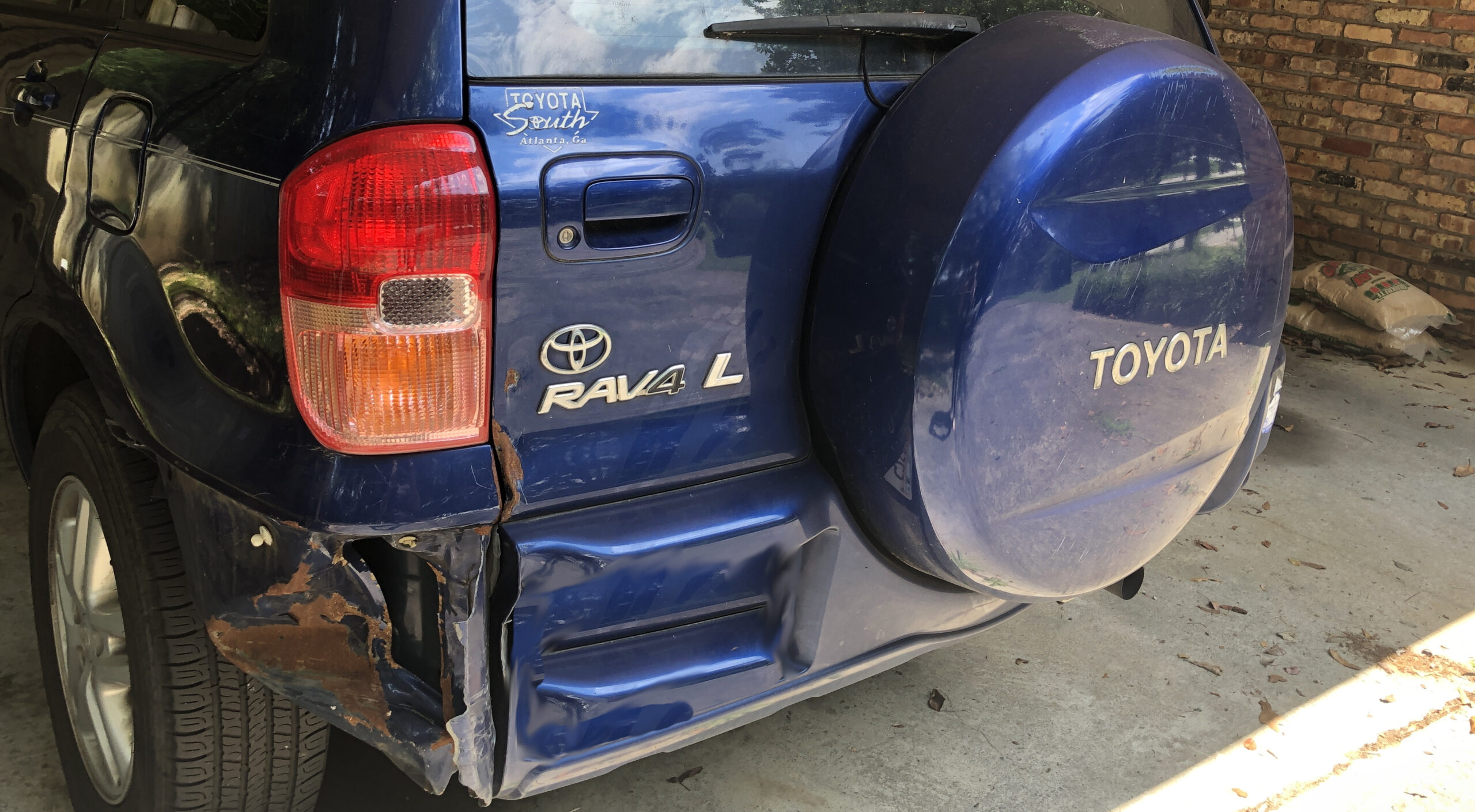
USAA: Problem Space Research in a Large Enterprise
Reorganize what we do along the member experience, so we can reduce friction points in the customer journey.
An insurance company can now see past the end of the claim

Move to Action
This startup wanted to make citizens’ concerns more visible and influential to United States policymakers. To guide its strategy, the leadership team needed to understand all the parts of citizen action, as well as the thinking styles. (One of the leaders had used Data Science That Listens in a prior startup, Votizen.)
The founder who sponsored the project left the company, and the results might not have been used in the manner intended.
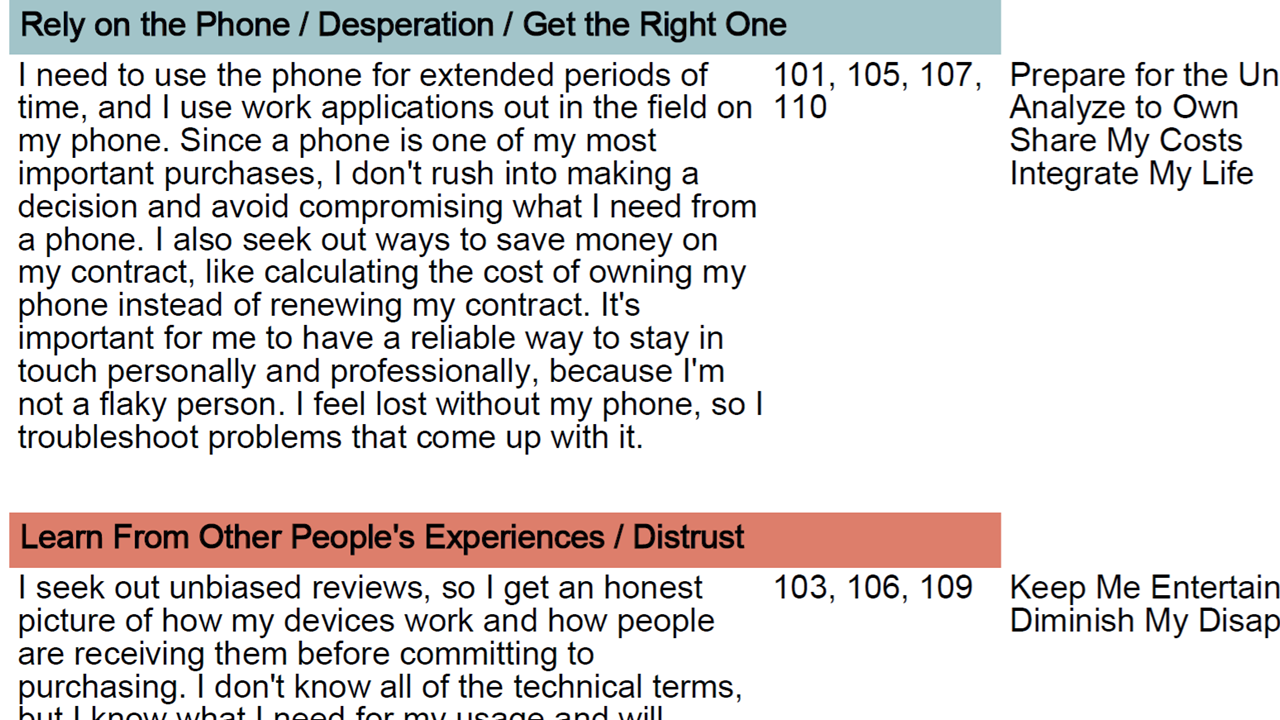
When It’s Time for a New Phone
Motorola had lost market share after the iPhone, and after being bought then sold by Lenovo. The team wanted to understand areas where they could rebuild the brand, not only with messaging, but also with ideas for phone products. The phone-build team had already created customizable color phones, with a very high resolution camera, but they were not selling well. What to do next?
As part of this study, Indi also did listening sessions with stakeholders and uncovered a fundamental distrust between departments. Once this distrust was aired, the teams could mend relationships and begin in one of the new directions indicated by the mental model skyline and thinking styles.
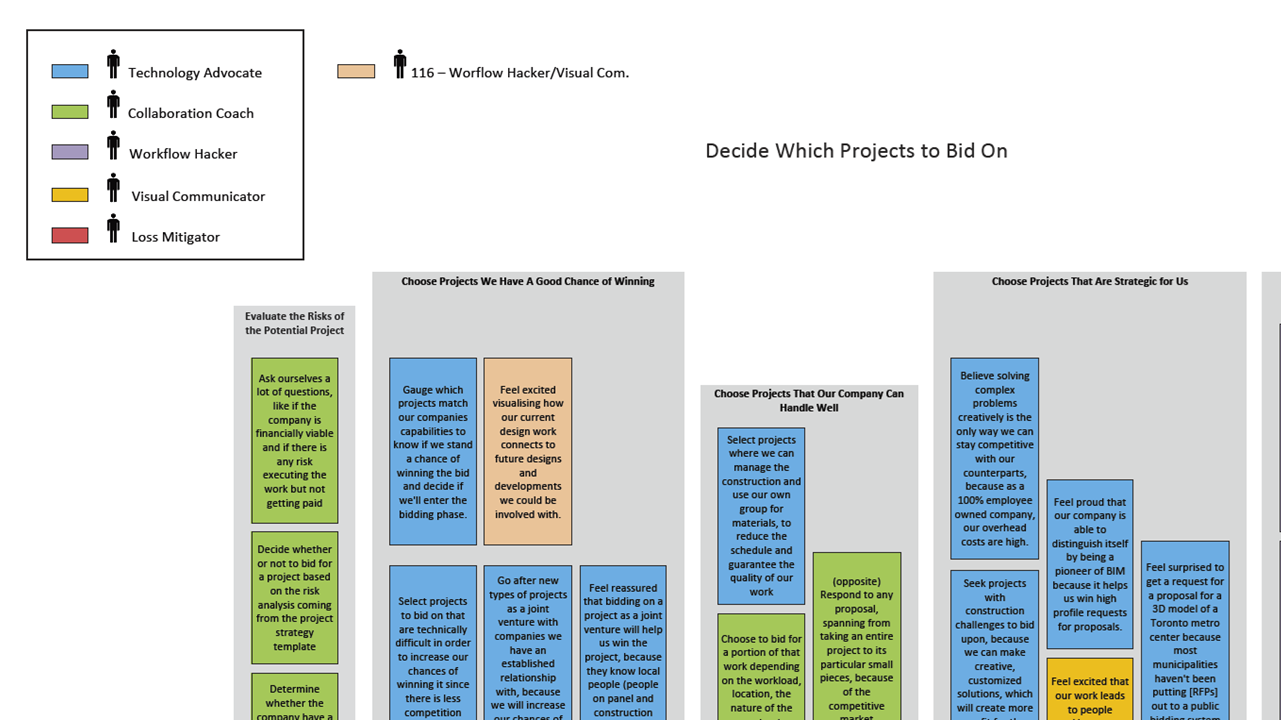
Bidding a Transportation Engineering Project
Competition has taken some of our market share, so it’s time to understand more deeply the ways we can support engineers.
A few areas sparked our interest to differentiate ourselves immediately. New roles working alongside old ones. The strategy folks are in small companies, and they are the early adopters as they seek ways to compete. New tech has created hindrances to collaboration.

Keeping Up with Tech
Now that smartphones were common, the org needed to upgrade the way people operated the oil rigs. What could be done to make the digital side of operations first-in-class, and keep NOV at the top of competition?
Based on deep understanding of the cognition, relationships, and teamwork that go into drilling a well, the design team at NOV was able to begin upgrading the digital experience. This work was guided over the years by the mental model skyline.
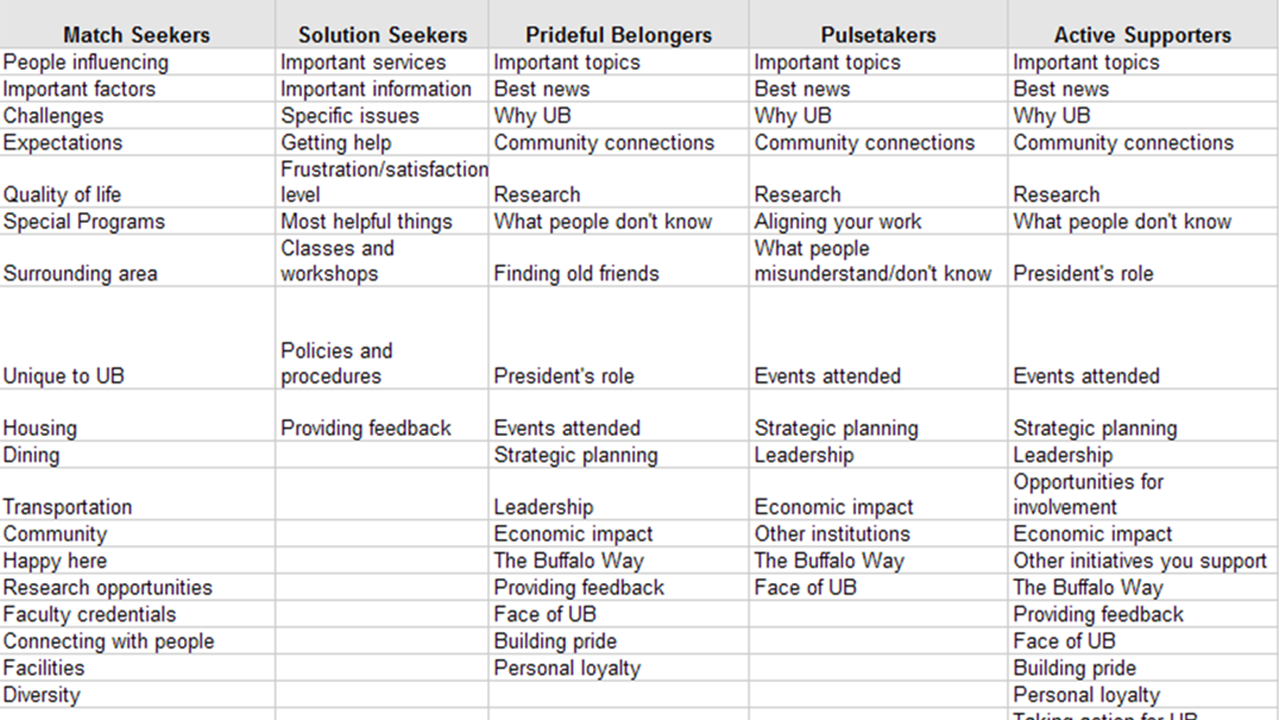
University Growth Goal
The university had a big goal: grow by 40% and expand research funding for the medical school. Rebecca was in charge of department websites across the school, so she needed a solid marketing strategy. She started with only a handful of departments.
The uptick in enrollment for these departments was so successful that a few other departments reached out to Rebecca. “We are overhauling all our legacy products as part of this … all research driven. The most interesting aspect is how we choose stories based on the mental models. By writing content that aligns with needs and motivations, we can get higher click-throughs and more conversions. … Talk about the characters writing the book for me!

Friends Don’t Let Friends Date Alone
This startup needed to differentiate itself in a market where there was an already popular dating app. The founder’s premise was that people going to bars needed a “wingman.” The head of product wanted to be sure.
The people who were interested in dating as a means to find a partner were clear in their approaches, and much less prone to hasty decisions requiring a friend to keep them from trouble. These people were also less likely to drop into bars. We came up with four thinking styles, only one of which actually believed love is possible. This called for a whole new market approach, one that was successful in the short run.
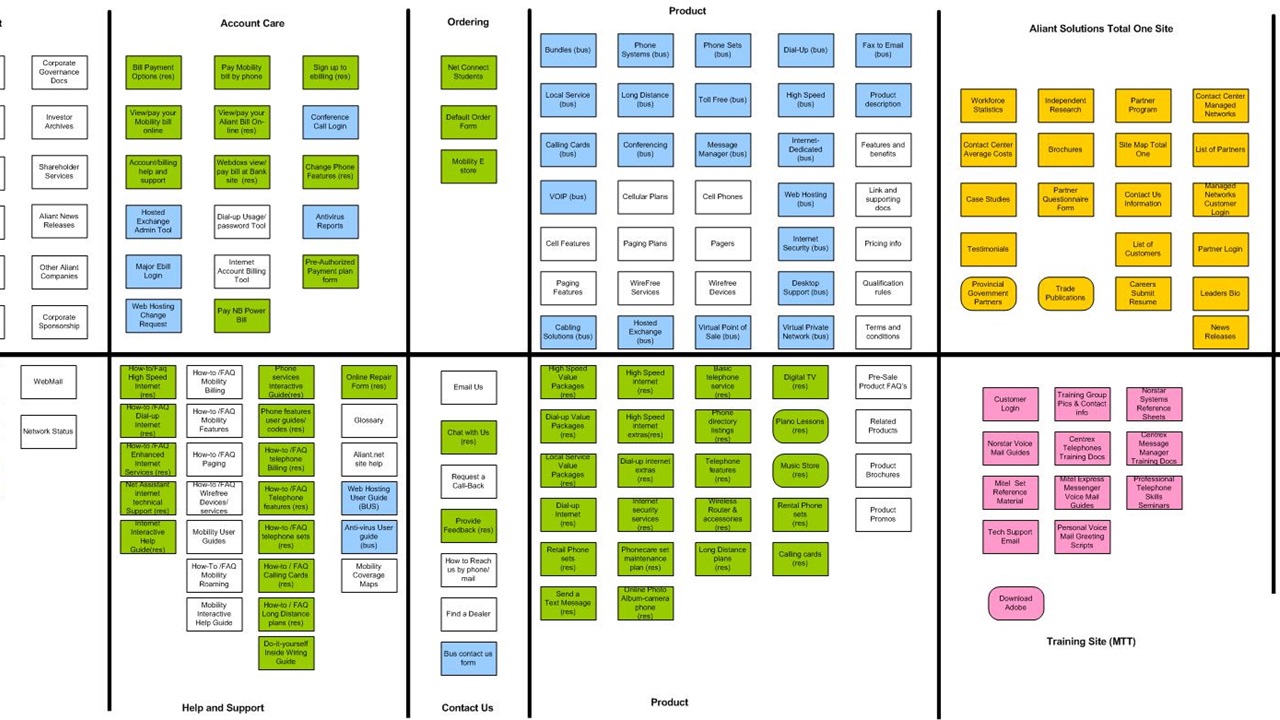
Stood the Test of Time
The website was in need of customer-centric improvement, so Connie Frennette shopped the annual plan for budget. She found a partner in the VP of Customer Service. Together they set out to see their org from the customers’ view.
The mental model skyline got the team off to a good start. Again the following year, including another department. In March 2011, Connie wrote to say they still work with the Mental Model. (co-created July-2005) “I am pulling it out again this week for a new piece of work. It really has stood the test of time for us.”
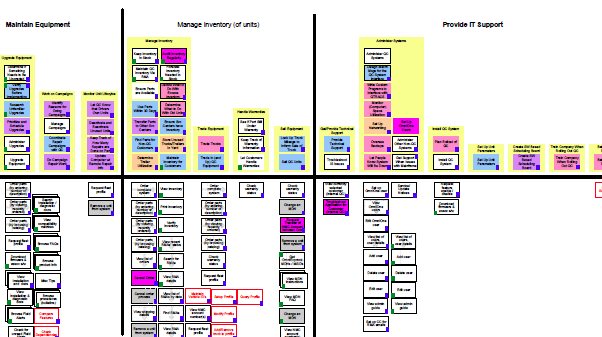
MeasureMap: Tracking My Website
Guide the early stages of a tool that helps website owners see how people are using it. The idea is to adjust the site to encourage or make it easier for people to do certain things.
The prototype demo was so successful that Google bought it, and now it is Google Analytics. The mental model skyline directed the first several years of development.
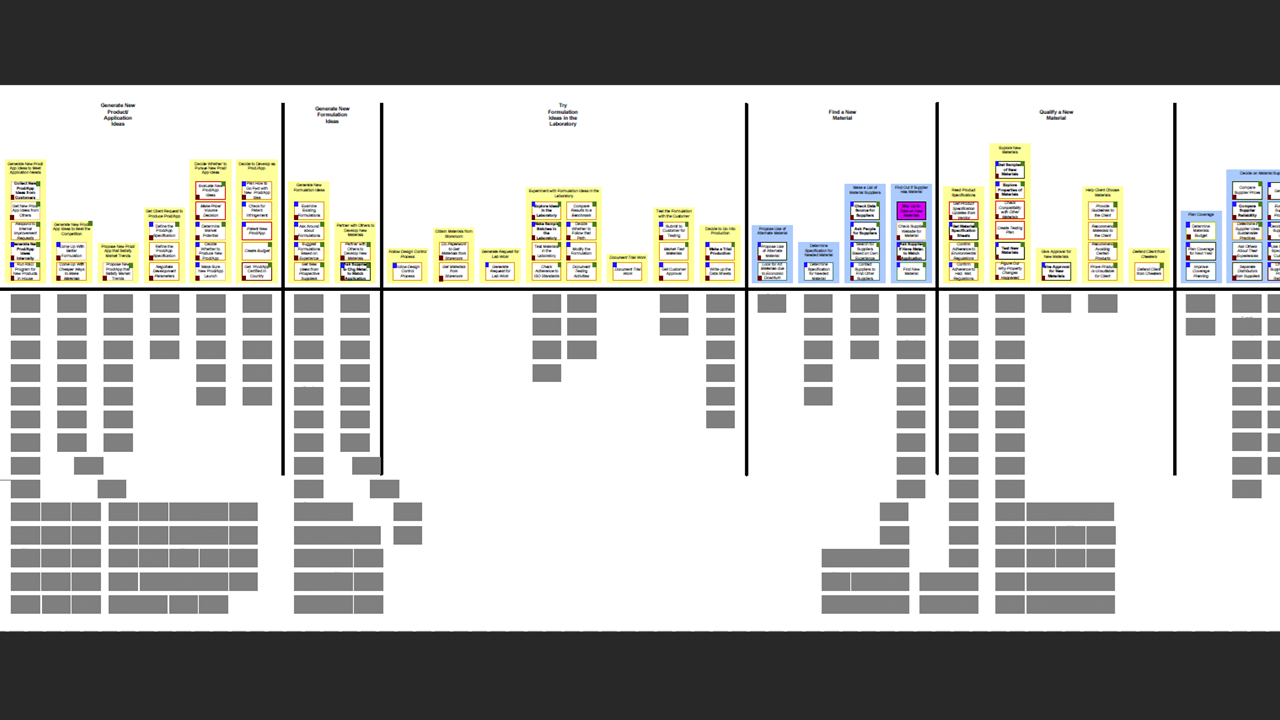
Re-Attracting Customers
People don’t just beat a path to our door anymore. The website wasn’t doing a good job of replacing sales reps, so we needed research as evidence to guide change to the site and evidence to potentially re-hire some sales folks.
The team was able to redesign the site to match how scientists considered experimenting with ingredients, and how important the reality of the production line was. Sales increased. I don’t know if sales people were re-hired, though. Possibly after the CEO left, and the company returned to more traditional thinking.



